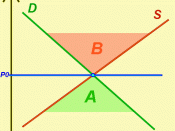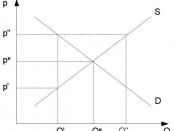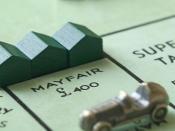GOALS OF ECONOMIC SYSTEMS
Every economic entity is confronted with three basic issues
1. what to produce
2. how to produce it
3. how to allocate the final output
Organization:
National economies
Central planning
Free Markets
Firms and Households
Centralized decision making
One authority for decision making
Pareto efficiency
A distribution of resources where there are no alternative allocations that keeps all individuals at least as well off but makes even one person better off. When there is an efficient allocation of resources, all members are equal. In Pareto some are better off.
Property Rights and Exchange in a Market Economy
Property Right: legally enforced right to select the uses of an economic good.
Ownership: involves use rights and alienability rights.
Gains from Trade
People buy and sell to make themselves better off. Trade is when the buyer places a higher value on the item of the seller. Gains from trade make both parties better off.
Mutually advantageous. Gains form trade come form individual preferences, since people place different values on items according to their preferences.
Comparative advantages: specialization of a good.
A common misconception is that trade takes place because people have too much of some goods.
Trade is an important form of value creation., providing important incentives to move resources to more productive uses.
BASICS OF SUPPLY AND DEMAND
MARKET PRICE SYSTEM - THE PRICE MECHANISM
Market includes all potential buyers of a certain product.
Competitive market: many buyers and sellers and individual transactions are so small in relation to the market that the price is unaffected by any single sale or purchase.
Demand curve depicts how many people are willing to buy a product at each price.It slopes downward because people will buy more if products have lower prices.
Supply curve depicts how many producers are...


